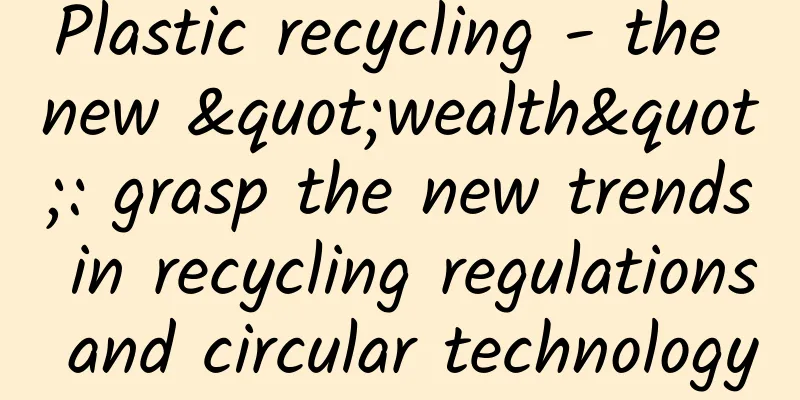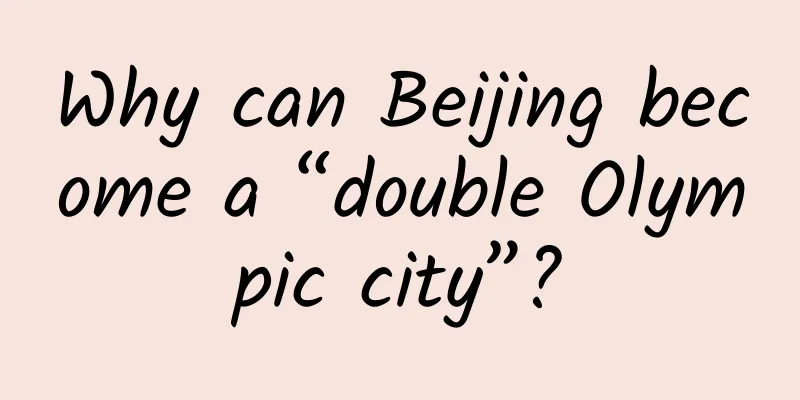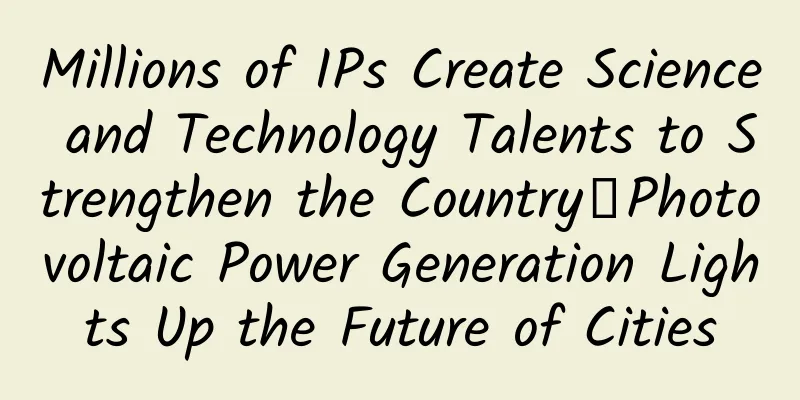Plastic recycling - the new "wealth": grasp the new trends in recycling regulations and circular technology

|
The sustainability challenge: Why plastics need to be cleaned up Plastics emit about 2 billion tons of carbon dioxide equivalent (greenhouse gases, GHG) each year, accounting for about 4% of global carbon emissions. As the main producer and processor of plastics, the EU accounts for 9% of global emissions. GHG emissions are present throughout the entire plastic value chain, and only 10% of plastics are recycled after they are discarded. At the same time, demand for plastics is expected to continue to grow strongly, and plastic waste will also increase accordingly (Figure 1). Figure 1: Challenges of sustainable development: Sources of carbon dioxide emissions and carbon footprint of the plastics industry chain The key measures to address the sustainable development challenges of plastics are the 3Rs, namely Reduce, Reuse and Recycle. This time we focus on the third R - plastic recycling. Recycling can reduce greenhouse gas emissions by extending the life cycle of plastics, while choosing less energy-intensive reprocessing instead of using virgin materials to make plastics. However, it should be noted that plastic recycling is not easy, no matter what raw materials are used. Plastics regulations: Target setting is an effective way to boost plastics recycling Since the 1990s, mandatory regulations on plastic waste disposal have been introduced around the world, especially in Europe. Currently, about 70% of plastic waste is subject to EU sustainable regulations, covering a variety of plastic application scenarios such as consumer goods and transport goods packaging, textiles, and electronic products. But this also means that 30% of plastic waste in Europe is still not included in the regulatory scope, mainly from the construction, automobile, manufacturing and agricultural sectors. Therefore, the world still has a long way to go to fully realize the circular economy, and there are many gaps in the current regulatory framework. In 2020, 24% of plastic waste in the EU was recycled, while the rest was landfilled or incinerated. For plastic packaging, the recycling rate is even higher, at 30%, as almost all EU plastic regulations are currently focused on packaging. However, the 30% recycling rate is still a long way from the target set in the Packaging and Packaging Waste Directive introduced in 2018. The target stipulates that the recycling rate will reach 50% by 2025 and 55% by 2030 (Figure 2). Figure 2: Plastic waste in EU27+3 countries in 2020 Many factors limit recycling rates, which are closely related to defects in the entire value chain (Figure 3) : Recycling targets are outdated: Recycling targets set decades ago focused almost exclusively on rigid plastics in households and films in industrial operations; Low oil prices drive the use of cheap plastic materials: in the absence of recycling targets, companies prefer virgin plastics, which are cheaper but less sustainable. The infrastructure for waste sorting (e.g. for lightweight plastics or beverage packaging) is not yet well developed: especially in southern and eastern European countries, most plastics and other waste are simply thrown away by households in a chaotic manner; Consumer awareness still needs to be improved: consumers are not given enough constraints and guidance to properly dispose of plastic waste; Plastic collection and sorting have low profit margins: The profit margin for collection and sorting is only 2-5%, mainly because the collection work is usually done by general waste suppliers; Limited sorting technology: In the past, waste sorting has not attracted significant technological investment due to limited applicability and demand for complex solutions; Recycling technology needs to be upgraded: In the past, recycling technology was limited to the mechanical recycling of rigid plastics and basic single-layer films, and therefore only covered a small part of the plastics with recycling potential in Europe. Despite these challenges and growing pressure to reduce carbon emissions, EU plastics regulations are expected to drive the recycling of plastic materials in the future. For example, in addition to the Packaging and Packaging Waste Directive, the Single-Use Plastics Directive requires a 90% collection rate for plastic bottles by 2030. Minimum recycling targets for plastics in various application scenarios are being prepared, which will bring many challenges, but also development opportunities for market stakeholders. Figure 3: EU plastic recycling value chain New trends: New regulations and new technologies are driving the development of plastic recycling The EU is ushering in a new evolution of plastic recycling, driven by an increase in the number and intensity of regulations. Standardization of collection and sorting is key as the number of specialized plastic packaging collectors continues to grow. Currently, seven European countries (i.e., Poland, Romania, Portugal, Hungary, Austria, Greece, and the United Kingdom) have committed to introducing landfill return schemes (DRSs) for plastic bottles by 2025. Building on the DRS systems already implemented in EU countries such as Germany and Sweden, the new DRS system will result in a recycling rate of PET plastics exceeding 80%. In addition, stricter plastic separation collections throughout the EU, coupled with the establishment of recycled content targets for most polymers, will further promote more high-quality plastic raw materials for recycling (Figure 4). Figure 4: Plastic packaging waste ratios in EU countries and mid-term plans for the DRS program However, the real driving force behind the new momentum in recycling may be the development of a range of innovative technologies. In terms of sorting technology, the emergence of new digital sorting technologies has greatly improved the output and quality of recyclables. For example, process automation has driven recycling volume, and new sorting capabilities can be sorted by color or polymer to achieve a closed-loop system. These technologies have the potential to increase the current classification recycling rate by 10-20%, which will reduce losses, improve the quality of sorting and recycling, and thus increase the price of recycling. These systems require brands and sorters in the industry chain to change and make large investments. The current technology is already highly mature and may subvert the industry landscape. In terms of recycling technology, there are currently two technologies: mechanical and chemical recycling. Mechanical recycling technology is already quite mature and has become the mainstream technology of the current recycling system. At the same time, chemical technology is still in its emerging stage and has great development prospects. Both recycling technologies will benefit from the advancement of sorting technology, and the two are complementary. New "wealth": Growth in the scale and quality of recyclable plastics will boost prices of recycled products EU recycling targets are driving growth in recycling volumes, but plastic processing capacity is struggling to keep up. To meet the EU’s 55% recycling target for plastic packaging, recycling volumes must nearly double from about 6 million tonnes in 2020 to about 11 million tonnes in 2030. Recycling of other plastics will need to triple, from about 1 million tonnes to about 3 million tonnes. This means that the respective growth rates will need to remain at 7% and 10%, while overall annual growth in plastic recycling will need to reach 8%. To handle the increased recycled plastics, and taking into account process losses, recycling capacity will need to increase by at least 150% (Figure 5). Figure 5: Plastic waste quantity and recycling in EU27+3 countries The price of virgin plastic is directly related to the price of its base material, oil. Although recycled plastic is made from plastic waste and has no direct relationship with the oil price traded on the day, its trading price is slightly higher than that of virgin plastic. This is the premium of sustainable development. As awareness of sustainable development increases and new technologies improve the quality of recycled products, the price difference between virgin plastic and recycled materials is expected to continue to widen, and producers will usher in greater profits. Seize the opportunity: Act now to capture profits from recycled plastic feedstock and recycled products With large amounts of high-value recyclates set to enter the market in the coming years, the time has come for industry players to act. The current high degree of market fragmentation offers multiple opportunities for players, and whether they can seize them will depend on the company’s current position in the plastics value chain and the correctness of its business focus (Figure 6). Key objectives of an expansion strategy (usually achieved through mergers and acquisitions) include: 1. Expand its business scope and improve business sustainability; 2. Gain growth momentum from current sustainable development trends; 3. Ensure the supply of raw materials and establish a closed-loop system; 4. Seize the high-profit fruits of downstream processing links; 5. Expand market share From producers to specialized companies, from multinationals to regional companies, many industry players across Europe have taken active action with active mergers and acquisitions. For example: Austrian packaging company ALPLA Group acquired recyclers Texplast and BTB; Thai PET recycler Indorama integrated through the acquisition of Czech recycler UCY; Spanish recycler Circular Resources and German PRO Der Grüne Punkt conducted a vertical integration transaction. In the future, mergers and acquisitions are expected to continue to accelerate. Figure 6: Profit status of each link Clearly, there is huge potential for all stakeholders in the plastic recycling value chain. So how can players take advantage of these opportunities? We see a range of strategic initiatives by different companies to drive business, strengthen market position, and maximize profits. These actions are centered around extending the value chain and improving processing capacity, leveraging and integrating new technologies (Figure 7). The focus areas of strategic development will depend on the type of stakeholders, specific positioning and business model. But no matter what form it takes, participants need to realize that the time to take advantage of the upcoming opportunities is limited, and the first movers are likely to win most of the value. In order to succeed in this small and fragmented industry in the future, it is crucial to determine a reasonable strategic direction now. Figure 7: Strategic options for stakeholders in the industry chain Summarize Recycling of waste plastics is a key measure to reduce the production of virgin plastics, control the landfill and incineration of plastic waste, and further reduce industrial waste gas emissions from waste combustion. Currently, only about 10% of plastic waste is recycled worldwide, mainly due to weak consumer awareness, limited supervision outside the EU, and weak collection and sorting infrastructure. With the gradual improvement of market regulations and technological innovation, plastic recycling products are about to become new "wealth" with strong potential for scale growth and high profits. We recommend that relevant companies in the upstream and downstream of the plastic industry chain take effective actions now to seize new opportunities, such as optimizing the recycling management system, investing in advanced technologies, and actively seeking industry chain partners. From: Roland Berger Management Consulting |
>>: First experience with MIUI V5 on Android 4.4
Recommend
How much does it cost to develop a tableware mini program in Mianyang?
How much is the price for developing the Mianyang...
No need to install any apps! Here's a tip to stop spam calls and text messages
Many of my friends are deeply harmed by harassing...
2022 National Public Security Professional Knowledge Course
Course Catalog: ├──00 Electronic version of the b...
Do you want to soak your mouth in salt water when you prick your pineapple? No, this is a better way
"If you eat pineapple, your mouth will sting...
If you are not good at physics, please do not click on this article
Remember this fairy-like iced food in the restaur...
How to write “textured” copy? Here are 3 ways
Copywriting with texture can give people enough r...
"Integrating the culture of dating into marketing" is very powerful
Content introduction: What can you gain after read...
Zhu Jiang, Vice President of Jidu Auto, resigned less than half a year after joining the company
At noon on June 7, Sina Technology exclusively le...
A rough man enjoys exercising and losing weight
A brief introduction to Yijieren Yuelian Yueshou ...
Romantic fireflies are actually very cruel
The silver candle lights up the cold painting scr...
Get the operation guide of placing game ads on Toutiao today quickly!
Advertising is a process of selection Advertising...
Price inquiry for customized Zhanjiang tea mini program. How much is the price for customized Zhanjiang tea mini program?
There is no fixed price for the customization of ...
18 Foreign “Growth Hacking Cases”
The concept of Growth Hacker was first proposed b...
Big data reveals the top ten cities with the thickest snow in my country
China Weather Network News: There is no winter wi...
How much does it cost to customize a home decoration mini program in Chuzhou?
The mini program provides convenience for publici...









